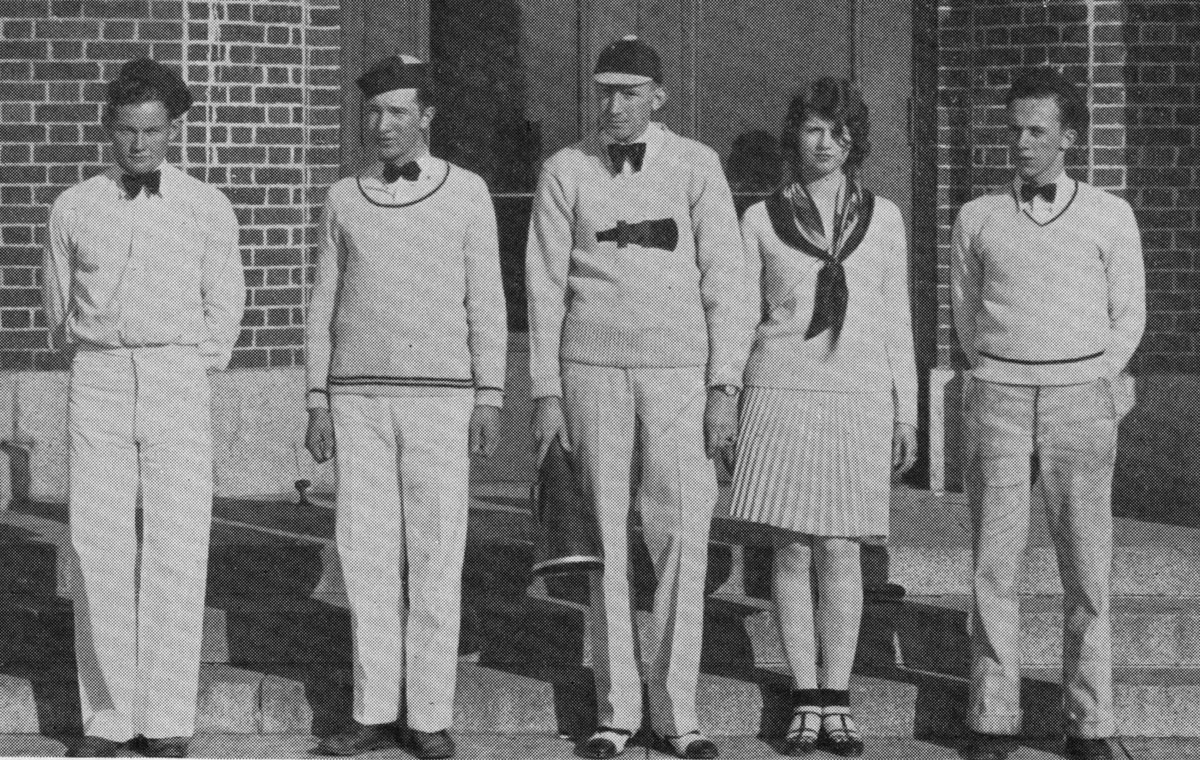- Editorial Offices
- 325 Brantly Hall
- Missoula, MT 59812
- (406) 243-2488
- themontanan@umontana.edu
- Icons By Maria Maldonado
Traditions are part of what makes UM unique and help build lifelong memories and connections

Traditions abound at the University of Montana.
If you think about it, it’s really not officially fall on campus until Homecoming arrives, which is a weeklong celebration full of traditions such as the parade, the Hello Walk, and Singing on the Steps during the Friday night pep rally.
The Forestry Club has Boondockers’ Day and the Foresters’ Ball. The basketball team paints the M annually. And of course fraternities and sororities have traditions dating back a century or more.
There’s also the tradition of that sneaky person who scales Main Hall in the dead of night and impales a pumpkin on the spire atop the clock tower.
These traditions are part of what makes UM unique. They help build lifelong memories and connections between students and this place.
Recently, a fascinating document came across my desk. It’s titled “A Survey of Student Traditions of the State University of Montana.” Written in 1935 by UM student Arthur Lee Svenson, it’s a 120-plus-page detailed account of UM traditions that occurred at the time.
“While attending a general sociology class during the fall quarter of 1933, I became interested in the project of a survey of campus traditions,” Svenson writes in the report. “In 1934 while doing independent work in sociology, it was suggested that I undertake such a survey. I have followed the method of procedure explained in the ‘Study of Student Traditions in American Colleges’ by Dr. W.H. Cowley of Ohio State University.”
Svenson submitted the report in an application for fellowship at American University in Washington, D.C. Cowley also received a copy, and in a letter to Svenson, writes, “it is far and away the best report of student traditions that we have received from any college in the country, and it is filled with so much meat that my joy is hard to describe.”
The “meat” Cowley speaks of is tasty. Chapters include “History of the State University of Montana,” “Origins of Traditions,” “Social Traditions” and “Intellectual Traditions,” among others.
Some traditions described in the book are still alive today in some form.
The Hello Walk originated in 1924. At the time, the walk was between the Library and the Law Building (which today are the Social Science Building and Jeannette Rankin Hall, respectively.) The intention was to say hello to passersby along the route. Legend has it that if you didn’t say hello, you were doomed to fail your next exam. Today, during Homecoming Week, different ways of saying hello – in various languages, slang, etc. – are colorfully painted on the sidewalk that connects the west end of the Oval to Brantly Hall.
Some of the most interesting traditions in the report are ones that now are defunct.
Did you know that from 1900 to 1931, male freshmen were required to wear green skull caps? And the females wore green hair ribbons? Or that, starting in 1897, an interclass tug-of-war was held? Or that cheerleading at sporting events was run by the Yell King and his Yell Dukes and Duchesses? One of the most popular cheers was the primal “Montana Yell,” which went as follows:
M-on-ta-na
M-on-ta-na
M-O-N-T-A-N-A
MONTANA!!!
One of the more risqué traditions was known as Spoony Rock. It was a low, sloping rock in the center of campus, which was, according to Svenson, “ideal for intimacy.” It acquired its name around 1900 and became quite a favorite rendezvous spot among students. After 1916, however, “with the installation of a better lighting system, more cars and more downtown and campus amusements, the rock lost its attractiveness.”
There was The Lyre Club, which was a secret society of young men calling themselves the “Independent and Reckless Order of Prevaricators.” And Hobo Club members would hop on trains to travel to watch the Grizzlies play on the road.
My favorite tradition at UM is the legacy of the No. 37 football jersey, which Kraig Paulsen started in 1983. The idea was that it would be passed on to a younger player who hails from Montana. The tradition continues today, with Helena’s Caleb Kidder sporting the number this season.
So what’s your favorite UM tradition? Was it Aber Day? Was it Singing on the Steps? Stealing Bertha the Moose? Cams and Dregs? Something from your fraternity or sorority? Let us know.
Maybe it’s a tradition we’ve never heard of. If so, it could be high time to update the past 81 years since the report was published.